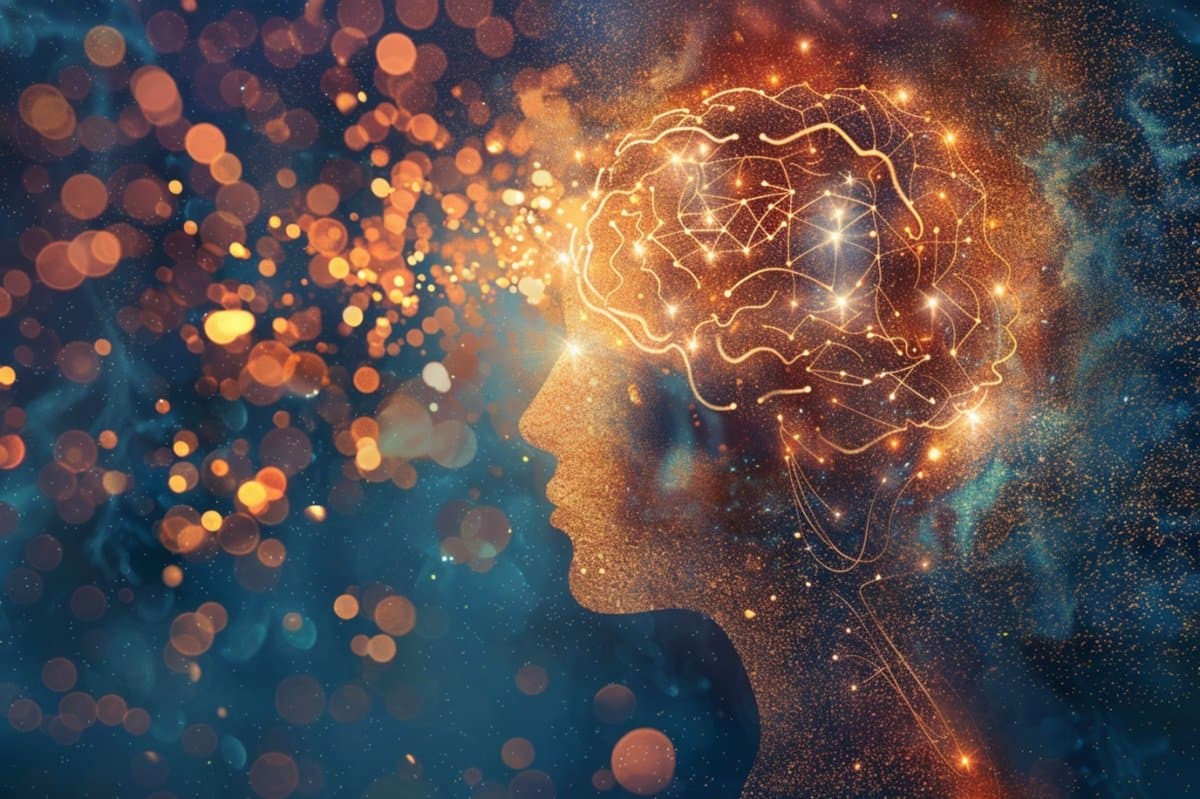Summary: A new study proposes a novel approach to studying consciousness through behavioral observations and learning curves. The study highlights that learning often occurs in sudden leaps, suggesting these “eureka moments” are preceded by conscious cognitive processes.
By examining the timing of these leaps, researchers aim to identify the brain mechanisms involved in conscious thought. This method could revolutionize our understanding of both human and animal consciousness, offering a more precise way to study cognitive information processing.
Key Facts:
- Conscious learning often happens in sudden leaps, termed “eureka moments.”
- These moments are believed to be preceded by conscious cognitive processes.
- Professor Dere’s approach uses learning curves to time-stamp and study these processes in the brain.
Source: RUB
For generations, researchers have been pondering the question of how and where consciousness is formed in the brain.
Professor Ekrem Dere from Ruhr University Bochum, Germany, proposes a new approach to researching conscious cognitive information processing. He advocates defining phases of conscious cognitive processes on the basis of behavioral observations and learning curves.
“Learning is often not a gradual process, but takes place in leaps and bounds; you could say that humans and animals experience sudden epiphanies every now and then,” he says. “It’s likely that these experiences are preceded by conscious processes.”
Dere outlines his new approach, which might apply to both humans and animals, in the journal Frontiers in Behavioral Neuroscience from July 2024.
Different levels of consciousness
Consciousness is not an all-or-nothing process.
“There are different levels of consciousness, depending for example on whether we’re sleeping or writing an email,” says Ekrem Dere from the Mental Health Research and Treatment Center in Bochum, who is also a member of the Sorbonne Université in Paris.
“At the upper end of this gradation, so to speak, we find conscious cognitive information processing that is required to deal with a complicated problem.”
In order to study the neurobiological correlates of these processes using scientific methods, a human or animal must be presented with an experimental task that can only be solved with conscious cognitive information processing – it’s crucial that there isn’t a preconceived solution.
“In the long history of cognitive behavioral psychology, a great many such tasks have been developed,” says Dere.
“However, the main difficulty is that a human or animal may not use conscious cognitive information processing throughout the entire processing time.”
Eureka moment is the time stamp
The researcher therefore suggests to use learning curves to narrow down the phases of conscious information processing with regard to their timing. In these curves, performance in a specific task is plotted over time.
“Learning performance often doesn’t improve continuously, but rather by leaps or in stages,” explains Dere.
This so-called discontinuous learning after insight can serve as a time stamp.
“Conscious cognitive information processing must have taken place at this point and presumably also in the seconds leading up to it,” says the psychologist.
“Armed with this knowledge, we can use imaging or electrophysiological methods to observe the brain during conscious cognitive information processing by comparing the time periods immediately before the sudden increase in learning with earlier or later points in time during the processing of the task.”
This would enable researchers to find out which mechanisms the brain used in which region for conscious information processing.
About this consciousness research news
Author: Julia Weiler
Source: RUB
Contact: Julia Weiler – RUB
Image: The image is credited to Neuroscience News
Original Research: Open access.
“Insights into conscious cognitive information processing” by Ekrem Dere et al. Frontiers in Behavioral Neuroscience
Abstract
Insights into conscious cognitive information processing
For over a century, the neuro- and pathophysiological, behavioral, and cognitive correlates of consciousness have been an active field of theoretical considerations and empirical research in a wide range of modern disciplines.
Conscious cognitive processing of information cannot be observed directly, but might be inferred from step-like discontinuities in learning performance or sudden insight-based improvements in problem solving behavior.
It is assumed that a sudden step of knowledge associated with insight requires a creative reorganization of mental representations of task- or problem-relevant information and the restructuration of the task, respectively problem to overcome an cognitive dead-end or impasse.
Discontinuities in learning performance or problem solving after an insight event can be used as time-tags to capture the time window in which conscious cognitive information processing must have taken place.
According to the platform theory of conscious cognitive information processing, the reorganization and restructuration processes, require the maintenance of task- or problem-relevant information in working memory for the operation of executive functions on these mental representations.
Electrophysiological evidence suggests that the reorganization and restructuration processes in working memory, that precede insight-based problem solutions are accompanied by an increase in the power of gamma oscillations in cortical areas including the prefrontal cortex.
Empirical evidence and theoretical assumptions argue for an involvement of gap junction channels and connexin hemichannels in cortical gamma-oscillations and working memory processes.
Discontinuities in learning or problem solving performance might be used as time-tags to investigate the implication of gap junction channels and hemichannels in conscious cognitive processing.







